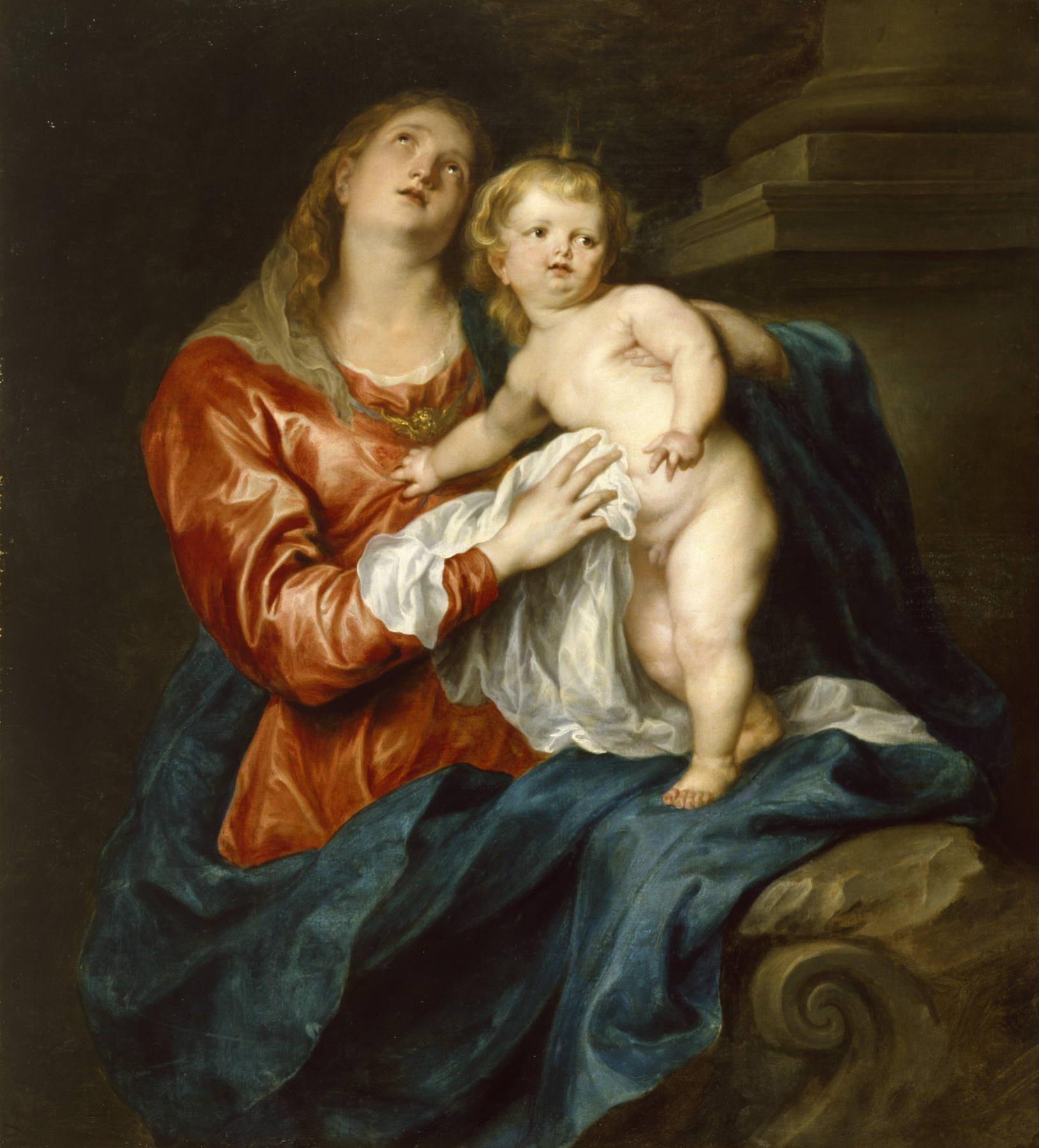Virgin and Child
(Baroque Europe )
This Virgin and Child subtly incorporates traditional allusions to the miraculous. Mary's long, loose hair identifies her as a virgin, alluding to the virgin birth. The palatial column evokes her future reign as Queen of Heaven, while the nakedness of the Christ Child, explicitly a little boy, reminds believers that, miraculously, Christ was fully human and fully God.
Van Dyck worked in the Antwerp studio of Peter Paul Rubens before spending six years in Italy. Once returned, he created a style synthesizing that of Flanders and Italy, producing dramatic, yet elegant religious works such as this Virgin and Child, one of several versions; Van Dyck's personal touch is most evident here in the Virgin's face and hand. He subsequently became court painter to King Charles I of England, who raised him to the nobility.Further analysis within the context of the "Chamber of Wonders" installation plus bibliography
Provenance
Provenance (from the French provenir, 'to come from/forth') is the chronology of the ownership, custody, or location of a historical object.
Duke of Marlborough, Blenheim Palace, until 1886; Agnew, London, by purchase; Joseph Ruxton [date and mode of acquisition unknown]; Sale, Christie's, London, May 21-22, 1898, no. 70; T. J. Blakeslee, New York [date and mode of acquisition unknown]; Henry Walters, Baltimore, December 1898, by purchase; Walters Art Museum, 1931, by bequest.
Exhibitions
| 2002-2004 | A Magnificent Age: Masterpieces from the Walters Art Museum, Baltimore. The Walters Art Museum, Baltimore; The Nelson-Atkins Museum of Art, Kansas City; Mint Museum of Art, Charlotte. |
| 1980 | Salute to Belgium. The Walters Art Gallery, Baltimore. |
| 1966-1967 | Christmas Display at the Baltimore Gas and Electric Company. Baltimore Gas and Electric Company, Baltimore. |
Conservation
| Date | Description | Narrative |
|---|---|---|
| 1/26/1942 | Treatment | coated; inpainted; varnish removed or reduced |
| 1/5/1967 | Treatment | inpainted |
| 12/1/1985 | Treatment | coated; inpainted |
| 12/2/1985 | Examination | examined for condition |
| 12/2/1985 | Technical Report | chemical analysis; examined for technical study |
| 12/13/1985 | Treatment | coated; inpainted |
| 5/1/1986 | Technical Report | examined for technical study |
| 1/29/1988 | Treatment | coated |
| 2/24/1993 | Examination | examined for condition |
| 3/1/1996 | Treatment | other |
| 6/17/1996 | Examination | examined for condition |
Geographies
United Kingdom, England, London
(Place of Origin)
Belgium, Antwerp (Place of Origin)
Measurements
H: 49 5/8 x W: 45 1/8 in. (126.1 x 114.6 cm)
Credit Line
Acquired by Henry Walters, 1898
Location in Museum
Not on view
Accession Number
In libraries, galleries, museums, and archives, an accession number is a unique identifier assigned to each object in the collection.
In libraries, galleries, museums, and archives, an accession number is a unique identifier assigned to each object in the collection.
37.234


